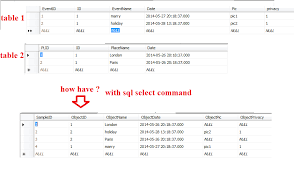Credit unions are member-owned financial cooperatives that offer a range of financial services, often with better rates and lower fees than traditional banks. Joining a credit union can provide numerous benefits, including personalized service, competitive rates, and community involvement. This guide will walk you through the steps to join a credit union and highlight the advantages of becoming a member.
What is a Credit Union?
A credit union is a not-for-profit financial institution owned and controlled by its members. Unlike banks, credit unions return their profits to members in the form of lower loan rates, higher savings rates, and reduced fees. Credit unions often focus on serving specific communities, groups, or industries.
Steps to Join a Credit Union
1. Determine Your Eligibility
Credit unions typically serve specific groups of people based on various criteria, such as:
- Geographic Area: Living or working in a certain area.
- Employer: Employment at a particular company.
- Membership in an Organization: Being a member of a specific organization or association.
- Family Ties: Having a family member who is already a member of the credit union.
Research credit unions in your area or those associated with your employer or organizations you belong to, to determine where you are eligible for membership.
2. Research Credit Unions
Once you’ve identified your eligibility, research different credit unions to find the one that best suits your needs. Consider the following factors:
- Services Offered: Ensure the credit union offers the financial products and services you need, such as savings accounts, checking accounts, loans, and credit cards.
- Fees and Rates: Compare the fees, interest rates, and dividend rates offered by different credit unions.
- Branch and ATM Access: Check the availability of branches and ATMs, especially if you prefer in-person banking.
- Customer Service: Look for reviews and ask for recommendations to gauge the quality of customer service.
3. Gather Required Documents
To join a credit union, you’ll need to provide certain documents and information. Commonly required documents include:
- Identification: A government-issued ID, such as a driver’s license or passport.
- Proof of Address: Utility bills, lease agreements, or other documents showing your current address.
- Social Security Number: For tax reporting purposes.
- Proof of Eligibility: Documents that prove your eligibility, such as an employment ID, membership card, or family member’s account information.
4. Complete the Membership Application
Visit the credit union’s website or branch to complete the membership application. This process usually involves:
- Filling Out Forms: Providing personal information, contact details, and proof of eligibility.
- Making a Deposit: Most credit unions require an initial deposit to open a savings account, often referred to as a “share” account. The minimum deposit amount varies by credit union but is typically between $5 and $25.
5. Set Up Your Account
Once your membership application is approved and your initial deposit is made, you can set up your account. This includes:
- Online Banking: Register for online and mobile banking to manage your accounts, pay bills, and transfer funds conveniently.
- Direct Deposit: Set up direct deposit for your paychecks or other income to your new credit union account.
- Additional Services: Apply for additional services such as checking accounts, credit cards, loans, or investment products.
Benefits of Joining a Credit Union
1. Lower Fees and Better Rates
Credit unions typically offer lower fees and better interest rates on loans and savings accounts compared to traditional banks. This can result in significant savings over time.
2. Personalized Service
As member-owned institutions, credit unions prioritize their members’ needs. This often translates to more personalized service and a focus on community.
3. Profit Sharing
Credit unions return profits to their members in the form of dividends, reduced fees, and better rates, rather than distributing them to shareholders.
4. Community Focus
Many credit unions are heavily involved in their local communities, supporting local events, charities, and initiatives. This community focus can provide a sense of belonging and pride for members.
Conclusion
Joining a credit union offers numerous financial benefits and the opportunity to be part of a member-focused community. By following these steps, you can easily become a credit union member and enjoy the advantages they offer. Whether you’re seeking lower fees, better rates, or personalized service, credit unions provide a compelling alternative to traditional banking.
For more information on joining a credit union and other helpful guides, visit howtojoin.org. We’re here to provide you with the latest and most accurate information on how to join various organizations and services.


